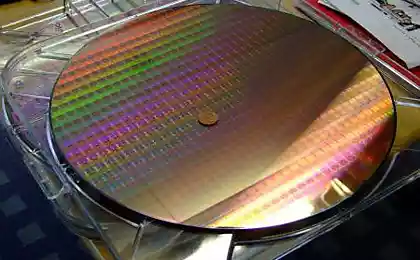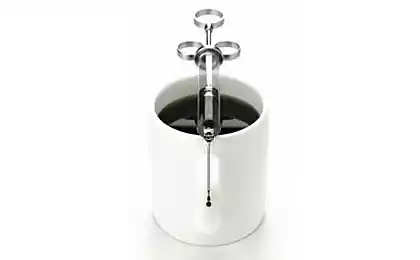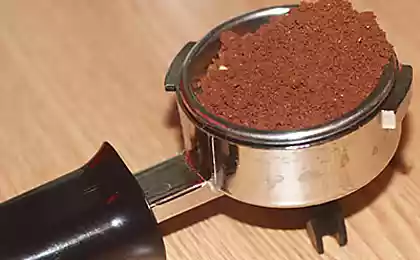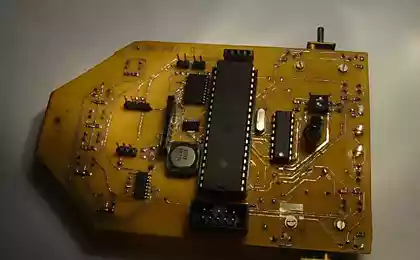3842
A delicious coffee for IT / carob machines from the lever to the PID
In recent years, more and more electronics used in various household appliances. Not escaped this fate, and such a device as a coffee-espresso machine. There are all the new ideas of use and management of different coffee makers, aimed at facilitating labor barista.
If you're tired of coffee "one-click" of the machine and would like to learn a little more about the possible alternatives to the request to grant a cat.

Why, in fact, an espresso? Despite the fact that caffeine has on me rather weak effect, I did not want to get an extra dose of caffeine. Espresso extraction process is limited (on average) 25 seconds just after the given time interval from the start leached coffee caffeine and bitter substances. Infographics below shows that the content is caffeine in a cup of espresso in times less than, say, a cup of strong black tea. So I can safely treat yourself to a couple of "double espresso" a day without fear of caffeine overdose. The theme of "usefulness" of coffee, we are not going to touch this individual studies. Definitely know that you should not drink coffee buckets and "fasting," is the most destructive combination.
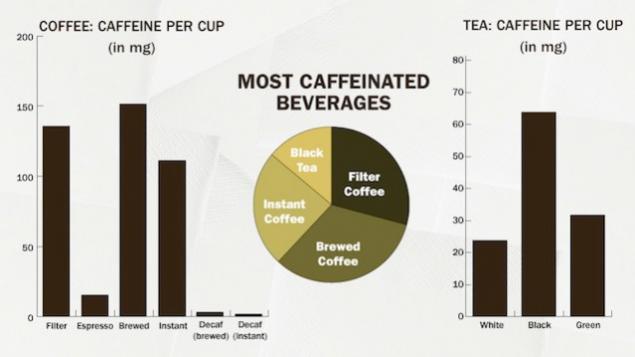
Espresso h4> So. The classic definition of "espresso" reads: Espresso (ital. Espresso) - the drink of coffee prepared by passing hot (90 ° C) and under pressure of 9 bar of water through the filter with ground coffee. It would seem that everything is simple, however, for example, most machines do not create pressure by fine grinding when the tablet itself from the coffee has a resistance to the flow of water, but due to jet / valve located behind the tablet. At the same time, this jet also coffee foams. Therefore, we will not be considered automatic and fully / partially manual carob coffee maker.
If you're tired of coffee "one-click" of the machine and would like to learn a little more about the possible alternatives to the request to grant a cat.

Why, in fact, an espresso? Despite the fact that caffeine has on me rather weak effect, I did not want to get an extra dose of caffeine. Espresso extraction process is limited (on average) 25 seconds just after the given time interval from the start leached coffee caffeine and bitter substances. Infographics below shows that the content is caffeine in a cup of espresso in times less than, say, a cup of strong black tea. So I can safely treat yourself to a couple of "double espresso" a day without fear of caffeine overdose. The theme of "usefulness" of coffee, we are not going to touch this individual studies. Definitely know that you should not drink coffee buckets and "fasting," is the most destructive combination.

Espresso h4> So. The classic definition of "espresso" reads: Espresso (ital. Espresso) - the drink of coffee prepared by passing hot (90 ° C) and under pressure of 9 bar of water through the filter with ground coffee. It would seem that everything is simple, however, for example, most machines do not create pressure by fine grinding when the tablet itself from the coffee has a resistance to the flow of water, but due to jet / valve located behind the tablet. At the same time, this jet also coffee foams. Therefore, we will not be considered automatic and fully / partially manual carob coffee maker.
We define one more thing: the primary conditions for a good espresso - at least two (without them it is simply impossible)
- freshly roasted coffee, no more than 2-3 weeks (in rare cases, depending on the mix - a little older)
- A good coffee grinder, grinding provides uniform (freshly ground coffee "lives", according to the environment
All carob coffee maker combines, oddly enough, the fact that they have a "horn" (hello, cap) or portafilter, they come in three types: a bottomless with an ode to watering for one cup or two Lake (spouts) 2 cups . The portafilter is inserted "basket" with a tablet of coffee, baskets themselves are for different amounts of coffee: 7 (single), 12, 14 (double), 15, 16, 18 or 21 grams (triple). Portafilter with a basket inserted into the "group" of the machine. This "general" have coffee machines ends. Conventionally, we divide domestic / prosyumerskie coffee machines into several groups
The types of coffee machines h4>
- Manual / levernye. Divided by the type of drive of the lever.
- Odnoboylernye coffee machine
- Odnoboylernye coffeemakers with heat exchanger
- Dvuhboylernye coffeemakers.
The main problem with which manufacturers are struggling coffee machines - thermal stability. Actually, the more expensive coffee, the greater the thermal stability at the Strait it can provide, and this directly affects the taste of the coffee, as the temperature is lowered coffee will become more acidic, and at higher - "burn" and it will appear bitterness. In more modern coffee makers added electronics to control the temperature.
The second challenge had coffee makers - creating steam for making milk beverages. In the case of a boiler (except some levernyh) process espresso and steam for frothing the milk is separated in time, since the water must be heated to about 120 degrees. The more steam boiler - the stronger the couples and the greater the amount of milk may beat in one go.
Let's try to understand the different types of coffee machines device.
1. Levernye coffeemakers. H4> The classic representative of a fully mechanical carob coffee machines can be considered levernuyu La Pavoni Europiccola / Professional, which appeared back in 1961, that is it - the same age group of eminent E61. By buying it, in part, I was subjected to natural curiosity, in part - a long-standing desire to indulge in "chrome miracle" and to some extent - a great article about it on the Prokofiev . Let me borrow a few sentences from this article. From electronics in the coffee machine, in addition to the toggle switch and the heating element is perhaps that the pressure switch. The principle of it is quite simple: in the boiler the coffee machine is a water temperature of about 120 degrees when lifting the lever up lifted Lever piston opens the slot and the water rushes from the boiler into the group, mixed with air and cooling water from the group immediately gets on the tablet of coffee, providing the so-called "natural prewetting." The problem with the thermal stability of the Strait is not worth it, because at the time of the Straits of water has practically no effect on its temperature. The La Pavoni man plays the role of pumps, pumping pressure piston that presses the hot water, causing it to pass through the compacted coffee in the portafilter. This effectively means that their pressure on the lever (lever. Eng. - Lever Lever), the user can adjust the Straits and the water pressure in the coffee, thereby forming the taste a cup of coffee. That is why I believe this coffee machine an excellent tool for exploring the world of espresso because it allows you to completely "from and to" control the process of preparing a beverage. Less of it - almost every cup will be "unique" and the process will become in pursuit of the perfect cup. Repeatability - the most difficult on this coffee maker, but many connoisseurs keep her at home as a weekend car. Plus, it will give a lot of pleasant and cheerful minutes while exploring the world of coffee. After all, if the grind is too fine, then push the water piston through the tablet will be very difficult, and the weight of the coffee machine is small, because in my case could often observe the image in the form of jumping around the kitchen kofelyubitelya desperately pressing on Lever and says: "Well, kitty, well, even a modicum ". However, if in such a case and managed to get some black oily substance on the output, then drink it, I have not risked (bitterness rare). If done correctly, the output will be fragrant and delicious espresso, which will get not so simple and on more expensive machines. At Pavoni beautiful maintainability, I went through the machine completely independently, replacing all the gaskets after purchase options BU, decalcified it and get rid of clicks when warming up. Moreover, I even liked messing around with it, there is this special kind of fun when you prepare yourself coffee machine, moved his hands.
Here's a photo directly levernoy my machine: i>

scheme levernoy construction machines on the example of La Pavoni
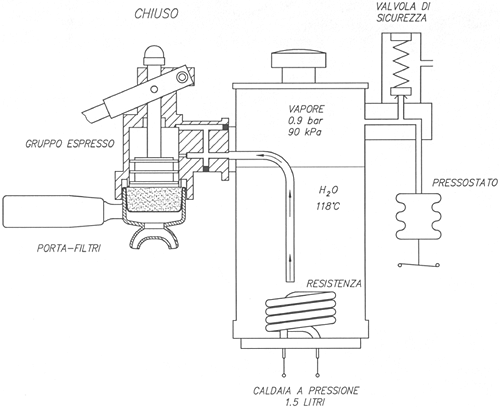
Technically this levernaya machine consists of a group with a piston and seals, which is attached directly to the boiler, the boiler, in which the bottom is inserted a heating element and an adjustable pressure switch, power button, on the side there is a scale for visual evaluation of the amount of water in the boiler, from the top - the pressure gauge (in If version Professional), cork, closing boiler, safety valve outlet with a tap for the steam tube. In the drawings, the machine looks a bit more complicated than my simplified description, I have listed only the main components, without going into details. Easy provides a car almost indestructibility, one can often find a copy of the 70s, which is still operational. The main problem of this machine - overheating of the group tried to solve it in the version of the millenium, reducing the temperature in the boiler and slightly increasing the size of the group. The problem of overheating occurs when the need to prepare a few cups "in a series of" what the house is not all and not so often. But couples, and strong, this machine has always by definition (pressure in the millenium version is set to a pressure of about 1.2 bar, which gives us about 120 degrees in the boiler, with a little running start). The tube whipping not the most comfortable, but the frothed milk for latte-art is quite possible.
second type levernyh machines - machines with spring Lever. Classical representatives of these coffee makers are like: Ponte Vecchio Lusso, La Peppina, Londinium, Bezzera Strega etc. The main difference lies in the fact that the user Lever compresses a spring which pushes the already provides the required water pressure through the piston. This design provides good repeatability "from cup to cup" and good for learning. Moreover, there are many connoisseurs prefer this type of any other machines. For example, released in late 2012 Londinium I made a considerable stir in coffee circles, despite the rather impressive price.
2. Odnoboylernye coffeemakers h4> The second type of coffee machines: coffee maker with a boiler is usually small. One of the most successful representatives of this type of coffee makers on the merits considered Rancilio Silvia (Miss Silvia). Try to understand how it is arranged:
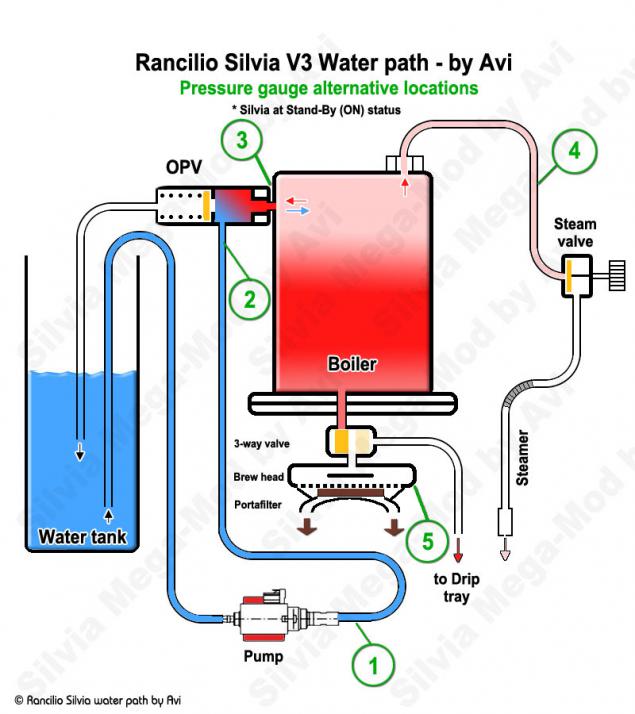
Consider heat your car, it is filled with 300 ml of water boiler, the group warmed up. On average, it takes about 40 minutes. Vibratory Ulka pump takes water from the cold water tank and feeds it into the boiler, the water passes through the so-called OPV (OverPressureValve) - pressure release valve. Usually the valve is set to the pressure of 11-12 bar. It is necessary in order that in the event of excess pressure in the tract of water discharged back into the water tank. In the case of pump vibration is this valve is adjustable pressure Strait.
Pumped into the boiler water it displaces from the heated water to the group, well-formed tablet should ensure Strait 25/50 ml of the drink for 25 (+ - 3) seconds at a pressure of 8-9 bar. After switching off the pump and stop the Strait in the group is still a residual pressure. To reset it to the pallet using the so-called three-way valve (3-Way Valve / solenoid valve). In the absence of this valve (such as it is done in a simpler La Pavoni) if you try to get the horn immediately after the end of the strait, the operator will get a slight "chponk" spitting feverish coffee mass in all directions, then it will be long and hard to wash themselves, a kitchen and coffee machine, remembering a bad word creators of this "hell of a vacuum cleaner".
Not shown, in fact, the thermostat, which provides adjustment of pressure / temperature in the boiler
The algorithm works as described above, identifies the main problem: because the boiler is fed cold water, hot dilute, the smaller the size of the boiler - the faster will decrease the water temperature at the outlet. In the case of low-cost machines, where the boiler has a capacity of 120-150 ml, the curve will begin with a temperature spike of about 96 degrees at the beginning of the strait, and lowering the temperature to 86 degrees at the end of the strait, which can not affect the taste of the resulting beverage. Moreover, if we want to shake up milk for cappuccino, that first we need to prepare espresso aside it aside, and then toggle to translate the machine to steam, wait until the temperature in the boiler reaches about 120 degrees, and only then begin to whisk milk . Because of the small volume of the boiler steam is not very strong (much weaker than than the smallest levernoy La Pavoni Europiccola), why beat a large amount of milk will not be easy.
3. Odnoboylernye machines with a heat exchanger (HX) h4> Next, consider odnoboylernye machines with a heat exchanger, is widely used in gastronomy and in many prosyumerskih machines for the home. The design of this machine is quite simple: there is one boiler large enough (in prosyumerskih machines - usually in the region of 1.6-2 liters, industrial machines for gastronomy boiler can easily be more than 5 liters for machines with several groups and up to 15 liters), temperature wherein via the pressostat is maintained at 120 degrees. Pressure switch allows you to adjust the temperature / pressure is to your liking. Inside the boiler is a coil / heat exchanger. When opening the steam tap, connected to the top of the boiler steam to obtain frothed milk. When the pump espresso cold water from the tank to the heat exchanger is heated and then goes to the group, from which strikes the coffee tablet.
Driving the car with the heat exchanger (HX): i>
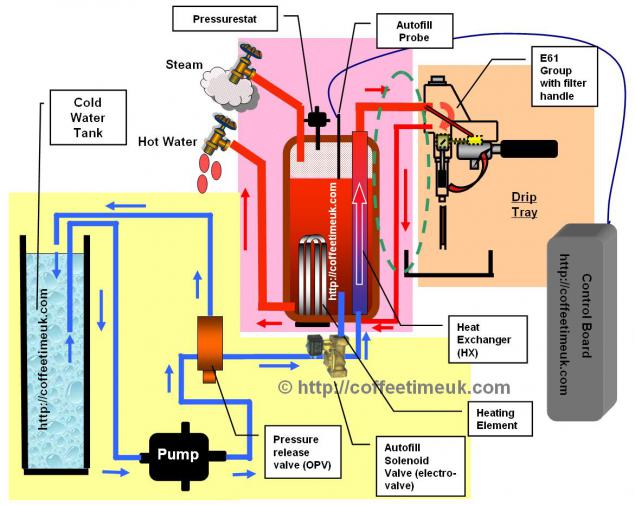
Thus, this design allows for both milk and whisk to prepare espresso. The disadvantage in this construction is only one: machine after heating in the heat exchanger is superheated water having a temperature too high for the espresso. Because before preparing a cup of coffee should be carried out so-called "blank Strait", superheated water drain into the sump. As a general rule should be guided by "the dancing streams." As soon as the water jets ceased to sizzle and dance - the temperature drops below 100 degrees. Next there is a rule of thumb: if at this point to start counting (99, 98, 97, 96, 95, 94, 93, 92), the latter figure, which will be stopped after the bachelor Strait and Strait is the temperature. This procedure is sometimes referred to as "thermal surfing" and it may be interesting to test the taste of new varieties of coffee at different temperatures. To facilitate this procedure, at the stage of learning very well suited thermometer Erik Svendsen . Eric has developed a special bolt, which is screwed into a technological hole E61 group and the bolt is inserted into a modified thermometer. During Strait thermometer shows the actual temperature of the water in the group.
I confess that I personally could not make friends with a machine of this type. I took away with Quickmill Andreja Premium, slightly modify it, but without thermometer Eric to get a temperature I do not always succeed, and in general the workmanship of the machine I was not happy, because I am quite quickly got rid of this unit and decided to try "dvuhboylernik" . My opinion about this car to a heat exchanger expressed here .
The car with the heat exchanger, which I owned a relatively short time: i>

4. Dvuhboylernye coffeemakers h4> So, what is "dvuhboylernik." As the name implies - a coffee machine having two boiler: a boiler - steam, a boiler - Espresso. Thus, the machine does not require idling Strait and does not require "thermal surfing." In the simplest case, each boiler on the pressure switch is tuned to different pressures, which gives us about 120 degrees in the boiler for steam and about 92 degrees (factory default setting) in the boiler for espresso. Often such machines also have a heat exchanger, passing through the steam boiler. After the water enters the heat exchanger has a heated state into the boiler for espresso, which provides the possibility of preparing a series of beverage almost without pauses. Machines of this type usually are more expensive machines with a boiler / heat exchanger due to the more complex structural elements.
I borrowed a couple of pictures from the site bellabarista. It perfectly illustrates schematically the principle of operation of the machine dvuhboylernoy the example of Alex.
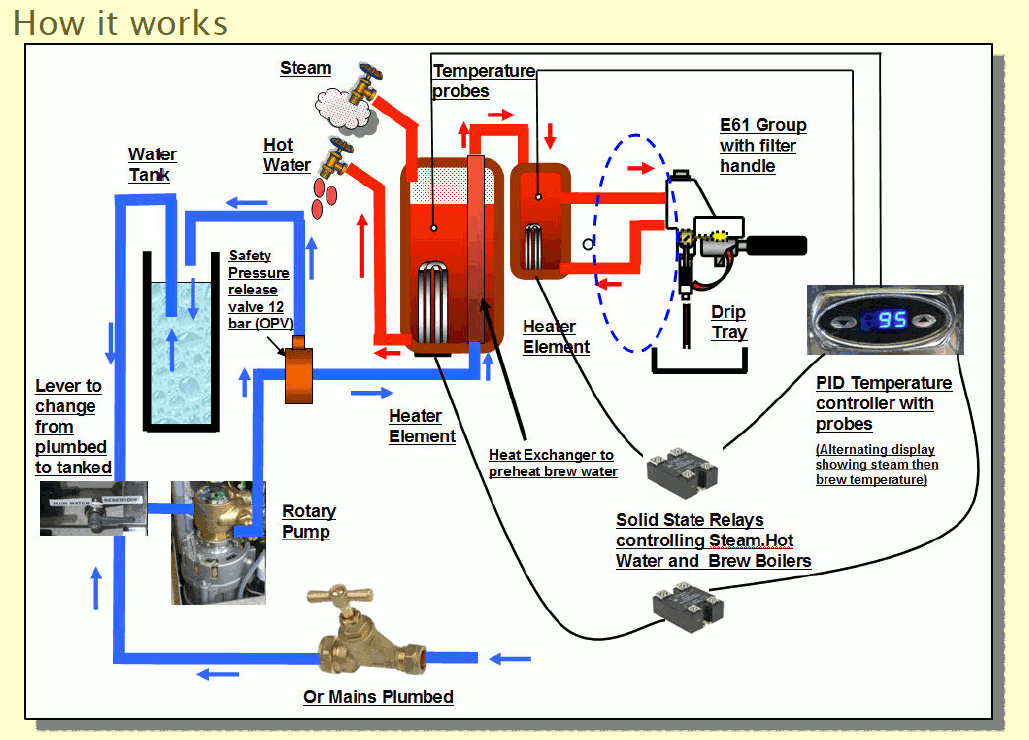
Water from the tank or the running water is supplied to the input rotary pump with bypass, then the output is a safety valve OPV, after water enters the boiler. In the steam boiler water is pumped as needed automatically. At the bottom of the steam boiler is tap to the tap for hot water. In the upper part - outlet for steam crane. When lifting lever group E61 and enabling pump water supplied through a heat exchanger located in the steam boiler in a boiler espresso, pushing the hot water out of it in the E61 group. After Lever on the group is omitted, the pump shuts off and the residual pressure and water is discharged into a tray from the group with a characteristic sound. PID controller has a temperature sensor for each boiler. According to the testimony of these sensors and the controller turns on / off the heating elements of boilers through the SSR relay.
Here is the inside of the machine itself. i>
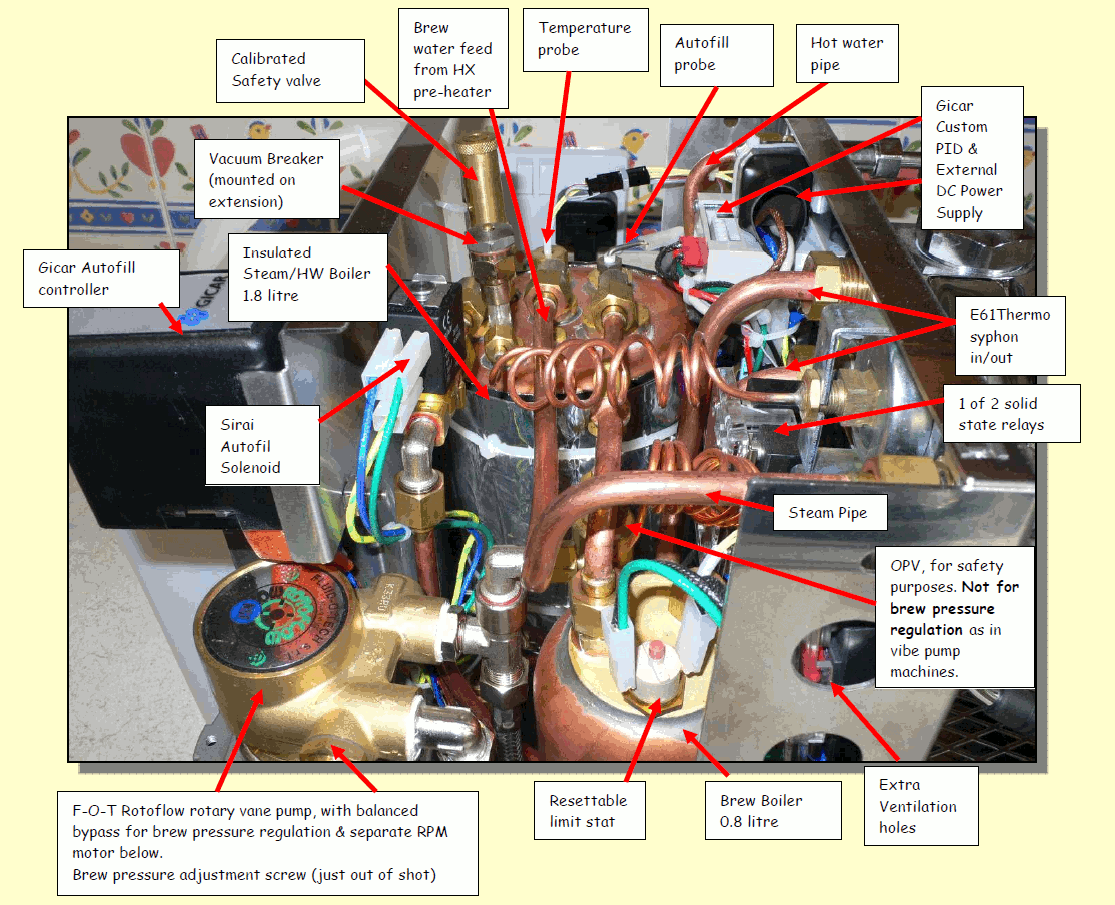
We consider separately the major components of coffee machines. h4>
1. Pomp. There are three types of conditional: h5> - Lever (muscle pull / spring) - a man stands here fanfare
- Vibration pump: pump the cheapest, most often from the company Ulka, it costs 18-50 euros drawback - noise and pulsation flow with the frequency of the network. Quickmill claims that the last car they put the pump in which the vibration / pulsation greatly reduced through innovations. I have not seen these pumps in action, but it sounds promising
www.home-barista.com/espresso-machines/updating-la-marzocco-gs3-vacuum-breaker-t18878.html
Group.
www.kickstarter.com/projects/zpmespresso/pid-controlled-espresso-machine
P.S.
Perhaps that Google will no longer produce equipment under the brand Nexus
Media: Kyiv weakened military onslaught, hear opinions









